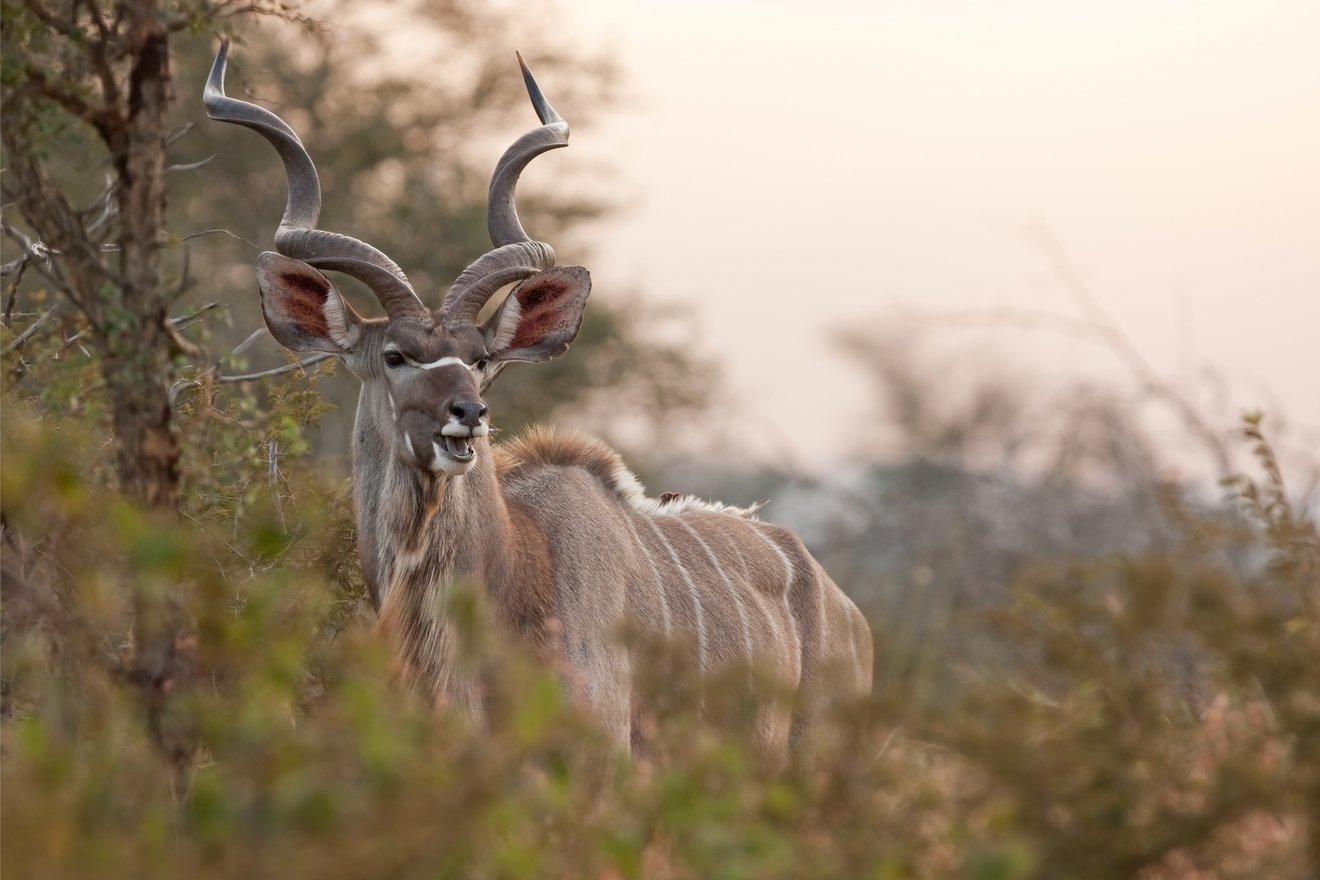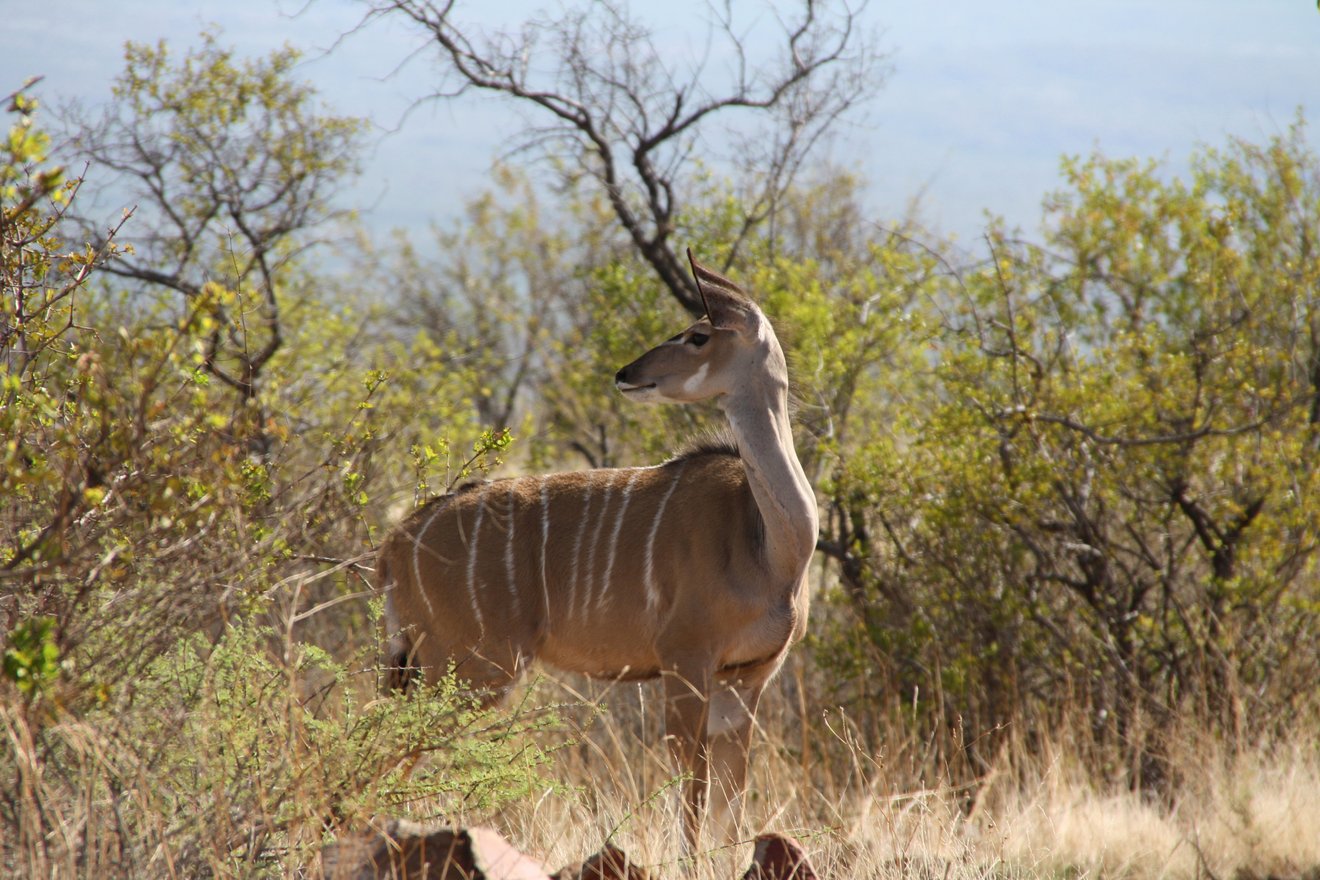Greater Kudus are among the most beautiful and largest antelopes in Africa. Their name comes from the impressive horns of the males. “Kudu” is derived from the native Khoikhoi language and refers to the twisted shape of the horns. While the cows have a much more subtle appearance, being lighter and hornless, the bulls are known for their magnificent horns (depending on age), a beard, and distinctive nose markings.
Kudu
The KING OF ANTELOPES
GUIDE KNOWLEDGE: GREATER KUDU
The greater kudu is not only known for its mighty horns, and beautiful appearance. The second tallest antelope species on KAMBAKU, after the eland, also has a great leaping ability. They can easily clear heights of 2.5 metres. Adult male greater kudus weigh between 200 and 300 kilograms, while females weigh between 120 and 200 kilograms. Both sexes have a hunched posture and a distinctive white chevron-shaped mark between the eyes. Despite their size, greater kudus are surprisingly quiet, moving almost silently through the bush.
As stunning as they are to look at, they are equally challenging to spot in the wild. Greater kudus are known for their elusive and shy nature. Females and young typically form small herds of 3-10 individuals, sometimes up to 24, while adult males are generally solitary, joining the herds only during the mating season.
These antelopes are most active during the cooler parts of the day, such as early morning and late afternoon, and they spend a significant portion of their day foraging for food. As herbivores, greater kudus primarily consume leaves, fruits, vines, flowers, grasses, and herbs. During the dry season, they need to drink water, but in the wet season, they can obtain most of their required moisture from their food. This dietary flexibility helps them survive in varied environments.
During the mating season, from May to August, males compete for dominance and mating rights. These fights involve impressive displays of strength, with males locking horns in a contest of supremacy. The mating season for greater kudus usually occurs towards the end of the rainy season. Males engage in elaborate courtship displays, including neck wrestling, to win over females. The gestation period lasts about 8-9 months, with calves being born at the start of the wet season, typically in February or March. Calves are hidden for the first few weeks to protect them from predators. Greater kudus reach sexual maturity at around 1-3 years of age. In the wild, they typically live up to 8 years, but in captivity, they can live up to 23 years.


![[Translate to English:] Kambaku-Kudu](/fileadmin/_processed_/6/6/csm_Kambaku-Kudu_82cbc14693.jpg)

